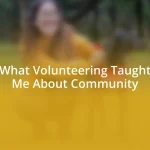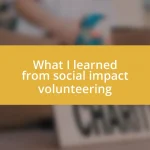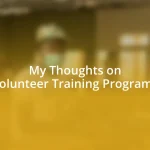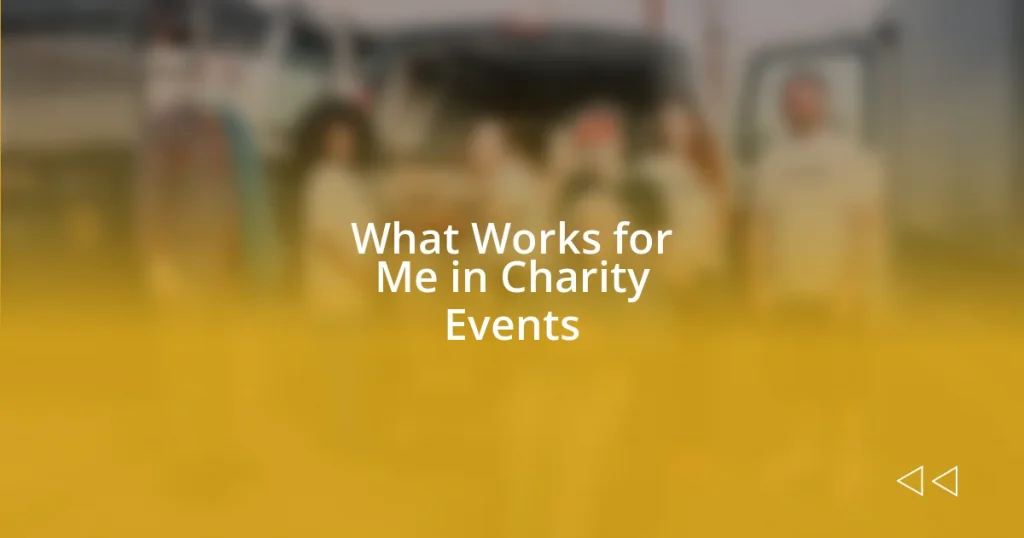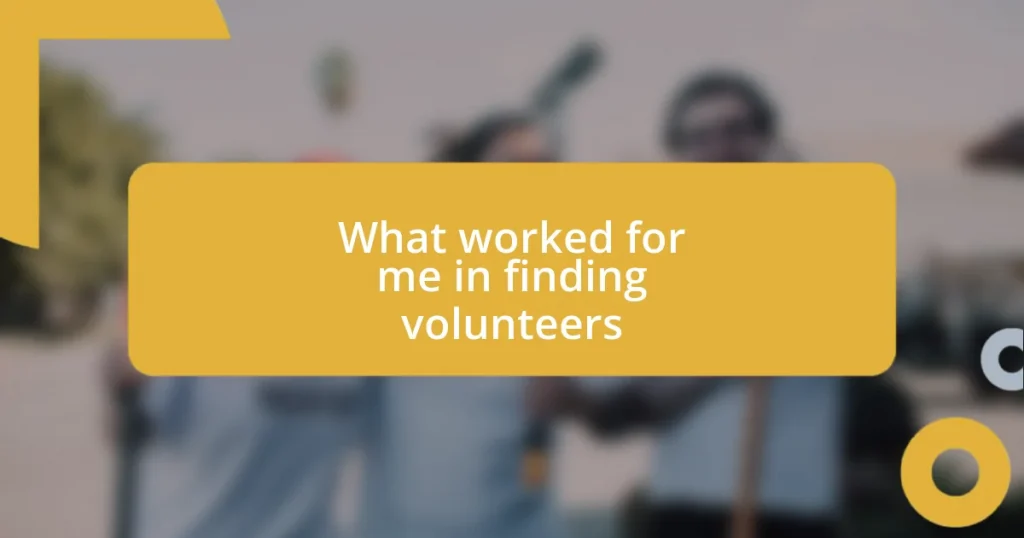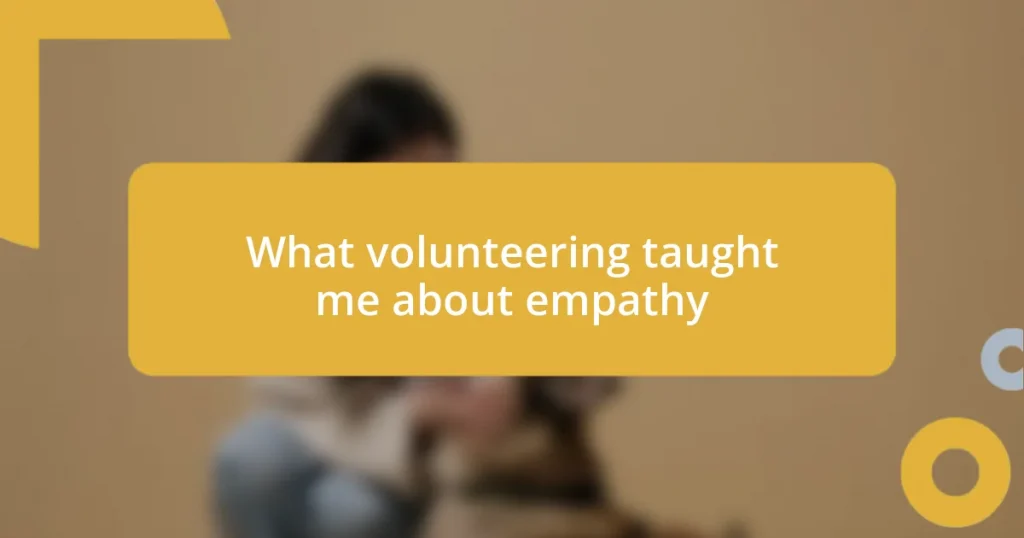Key takeaways:
- Establish clear goals for your charity event, focusing on both immediate fundraising and long-term community impact.
- Identify your target audience by analyzing demographics, interests, and community needs to tailor the event experience.
- Utilize storytelling and emotional connection in messaging, and measure success through participant feedback and tangible impact.
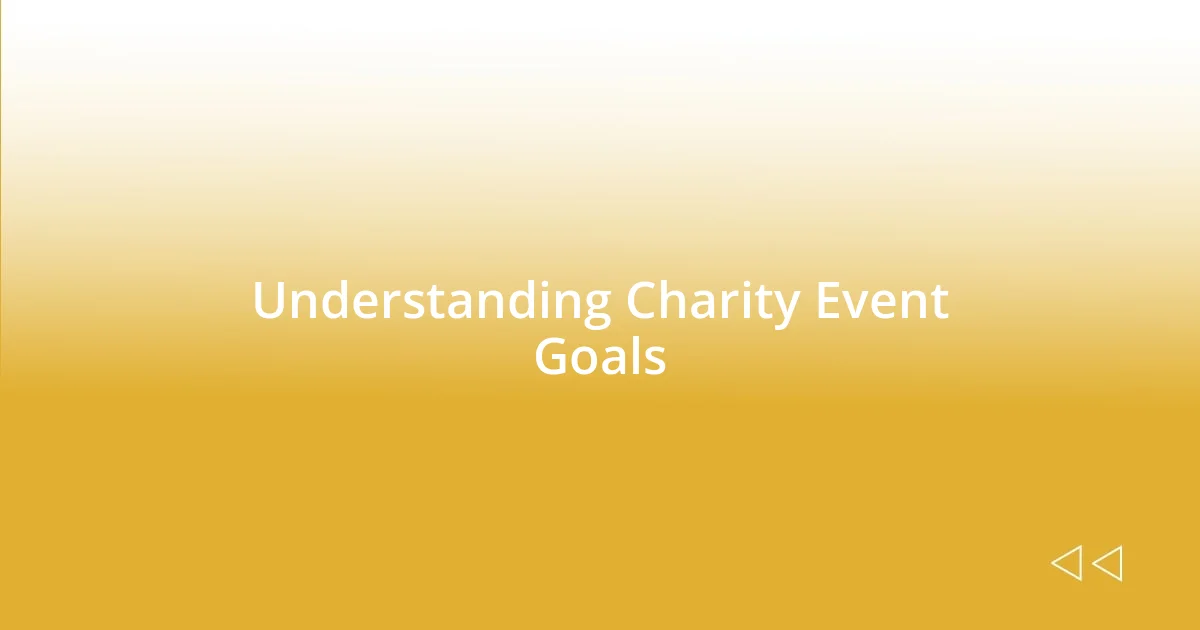
Understanding Charity Event Goals
Understanding the goals of a charity event is crucial for its success. Personally, I always start by asking, “What impact do I want to create?” This question helps me clarify the purpose behind each gathering, whether it’s raising funds for a cause I care deeply about or increasing awareness about an important issue.
In my experience, one of the most rewarding aspects is setting both short-term and long-term goals. For instance, during a charity run, our immediate aim was to raise $10,000 for local shelters, but the long-term goal was about fostering a community spirit. Each time I see participants return year after year, I realize we’re building something much deeper—connections that resonate beyond just fundraising.
Moreover, aligning your event’s goals with the values of the community is essential. Reflecting on a past gala, I noticed that when we incorporated community stories and experiences, our attendees felt a stronger connection to the cause. Isn’t it amazing how sharing personal narratives can turn an event into a movement? By understanding and embracing these goals, we can make each charity event not just an activity, but a meaningful experience for everyone involved.
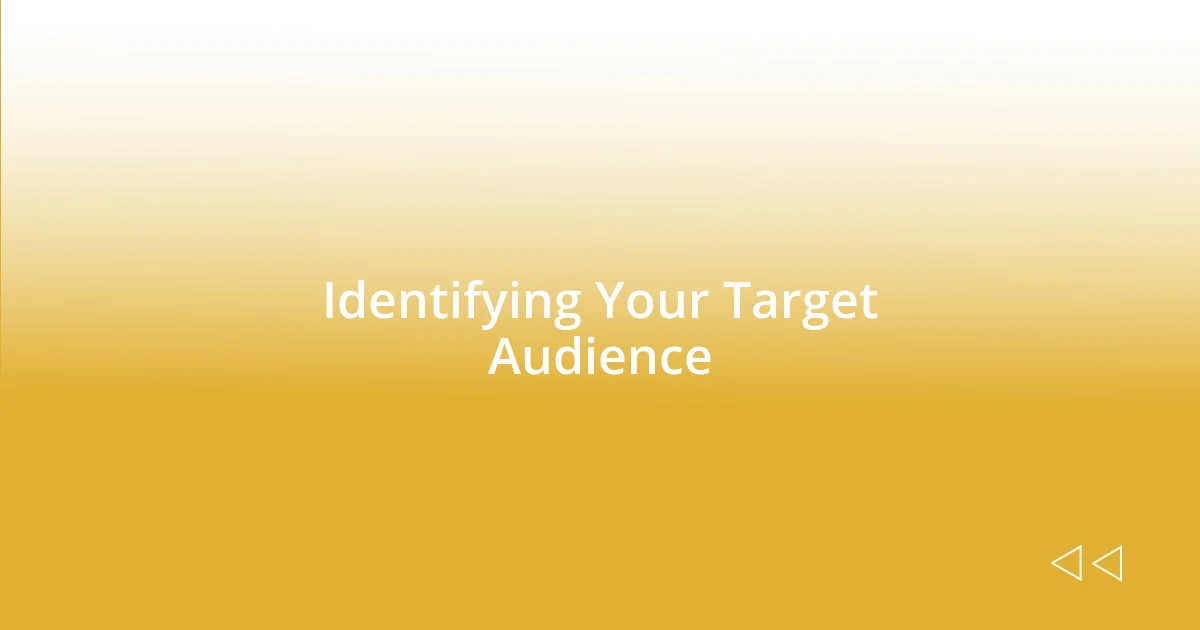
Identifying Your Target Audience
Identifying your target audience is one of the first and most important steps in planning a charity event. I remember organizing a small fundraiser where I underestimated the diversity of our community. We tailored our marketing towards young professionals, assuming they would be our main supporters. However, we discovered that families with children were just as invested in the cause. This realization helped pivot our focus, ensuring our programming appealed to a wider demographic, which ultimately enriched the event experience.
Consider the following key elements when identifying your target audience:
- Demographics: Age, gender, income level, and family status can influence participation.
- Interests: Understanding the passions of your audience helps in designing engaging activities.
- Past Participation: Analyze who attended your previous events and their motivations.
- Community Needs: Align your cause with pressing issues relevant to your community to foster connection.
- Feedback: Collect insights from past attendees to adapt your approach.
Recognizing these factors not only tailors your event but builds a genuine connection that encourages attendees to passionately engage, share, and support the cause.
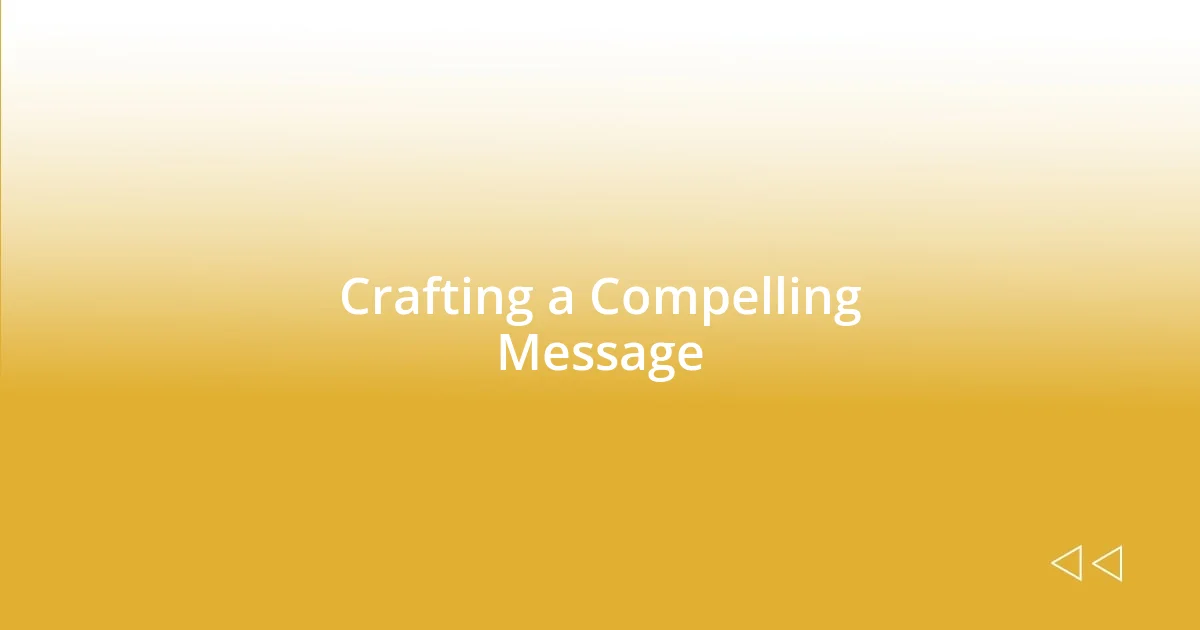
Crafting a Compelling Message
When crafting a compelling message for your charity event, it’s essential to connect emotionally with your audience. I recall when I was preparing a speech for a fundraising dinner. Instead of just rattling off statistics about our cause, I chose to share a heartfelt story about someone directly impacted by our work. Watching the audience lean in, visibly moved by the personal connection, made me realize how powerful storytelling can be.
Moreover, clarity is key. It’s easy to get lost in the details, but I’ve found that distilling your message down to a few impactful points resonates far more. For example, during a recent charity auction, I focused on the three ways attendees could make a difference that night. This simple approach made it not only memorable but also actionable—people left knowing exactly how they could contribute.
Finally, don’t underestimate the importance of a strong call to action. After sharing our mission and stories, I always end with an invitation to take part, which brings a sense of urgency and engagement. During one event, I proposed a challenge where attendees could match their donations, and it ignited a competitive spirit that raised our total well beyond expectations. Crafting that message was a game-changer, proving that clear communication and excitement can lead to outstanding success.
| Aspect | Insight |
|---|---|
| Storytelling | Connecting emotionally with personal anecdotes makes your message impactful. |
| Clarity | Focusing on key points makes it easier for the audience to remember your message. |
| Call to Action | Encouraging immediate involvement creates a sense of urgency and engagement. |

Selecting the Right Format
Selecting the right format for your charity event can significantly impact its success. I’ve found that choosing between an in-person event, virtual gathering, or hybrid model depends greatly on your target audience and the nature of your cause. For example, when we hosted a virtual gala during the pandemic, it allowed us to reach supporters from far outside our community, expanding our donor base in ways we hadn’t anticipated.
I remember organizing a charity run and initially opting for a traditional race format. However, after discussing with participants, we decided to add a family-friendly festival aspect. This pivot not only boosted attendance but created a lively atmosphere that encouraged interaction and additional donations. Have you ever thought about how a small change in format could lead to a more enjoyable experience for your audience?
Considering various formats also means evaluating logistical aspects like cost, venue availability, and technology needs. I once faced a steep learning curve when integrating live-streaming into an event; the tech hiccups were daunting. But ultimately, the engagement we achieved with a wider audience made the effort worthwhile. Balancing these elements can often lead to a format that feels right for everyone involved, and that’s what will keep your attendees coming back year after year.
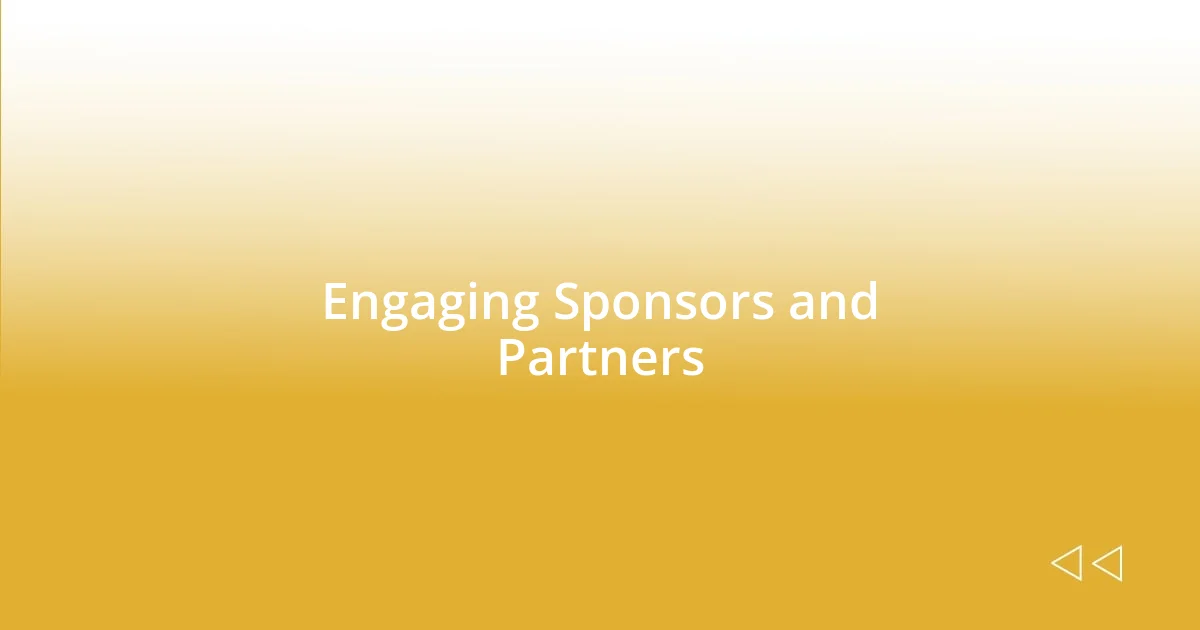
Engaging Sponsors and Partners
Engaging sponsors and partners is an essential aspect of any successful charity event. From my experience, building genuine relationships is key. I remember reaching out to a local business owner who shared a passion for our cause. Instead of presenting a formal proposal, I invited them for coffee and shared how their support could create a real difference. That casual conversation transformed into a meaningful partnership, resulting in them becoming one of our biggest sponsors. Have you ever thought about how simple, honest communication can foster genuine support?
Another strategy I’ve found effective is offering unique value to potential sponsors. I once partnered with a tech company for a charity hackathon. Instead of merely asking for their financial support, I proposed they could engage their employees in team-building activities while helping us solve real challenges. This not only helped raise funds but also provided the sponsor with added exposure and an engaged team. It’s a win-win situation! What opportunities do you see that could provide mutual benefit?
Lastly, don’t shy away from showing appreciation and celebrating your partners. After each event, I make it a point to send personalized thank-you notes, along with highlights from the event showcasing their contributions. One time, I even created a short video montage featuring the sponsors, which they loved sharing on their social media. Recognizing their support fosters long-term relationships, and it keeps them excited for future collaboration. How do you plan to make your sponsors feel valued?
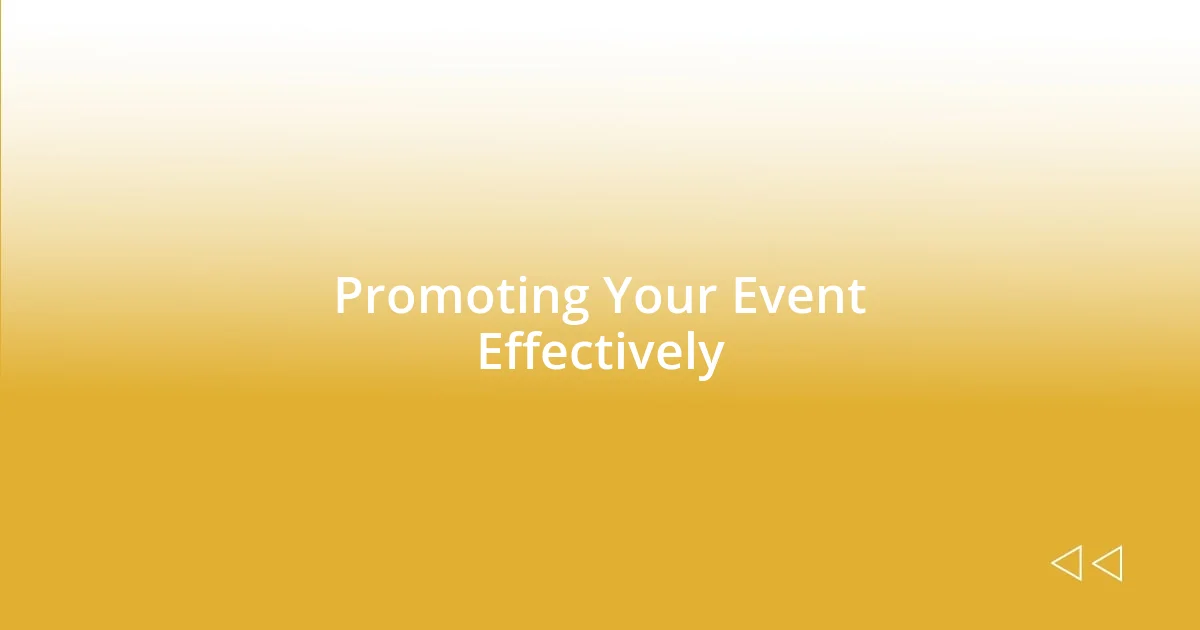
Promoting Your Event Effectively
When it comes to promoting your charity event effectively, leveraging social media can be a game changer. I remember the buzz we created around our latest fundraising dinner simply by sharing sneak peeks and behind-the-scenes content leading up to the event. It made our audience feel involved and excited to be part of something special. Have you ever considered how sharing your journey can build anticipation among potential attendees?
Creating shareable content is also vital. During one event, we designed fun graphics that not only communicated the event details but also included inspiring messages about our cause. I was amazed at how many people shared those posts, extending our reach beyond our regular audience. What kind of content could you create that would resonate with your community and encourage them to spread the word?
Don’t underestimate the power of personal invitations. I found that sending personalized emails to passionate supporters made a world of difference. Instead of generic messages, I took the time to mention their past involvement and how their presence could amplify the event’s success. Many responded positively, and I could see they felt genuinely valued. Have you thought about how a little personal touch could change their perception of your event?
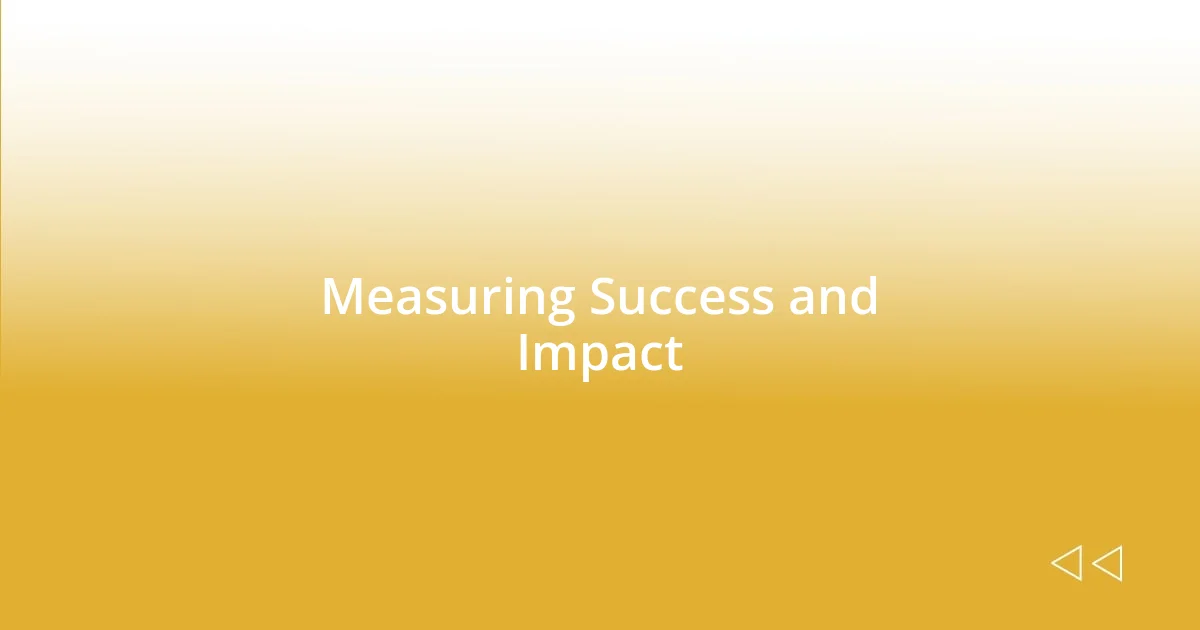
Measuring Success and Impact
Measuring success and impact in charity events goes beyond just looking at the funds raised. I’ve found that gathering feedback from participants can offer invaluable insights. After our last gala, I sent out a survey asking attendees what they enjoyed most and what could be improved. It was enlightening to see how their perspectives shaped my understanding of the event’s overall success. Have you ever collected feedback that surprised you?
Quantifying impact is crucial, too. For instance, during one event focused on literacy, we tracked the number of books distributed to children in need. Seeing the tangible results – like a photo of smiling kids holding their new books – really drove home the difference we were making. I remember the sense of fulfillment I felt knowing our efforts were genuinely impacting lives. How do you demonstrate impact to your stakeholders?
Additionally, storytelling has become a powerful tool for measuring success. After each event, I compile heartfelt stories from beneficiaries, illustrating how contributions have changed their lives. When I shared a poignant story about a young girl who gained confidence through our program, it resonated deeply with our supporters. They appreciated not just the numbers, but the human connection behind the data. Have you explored how storytelling can amplify your impact?





